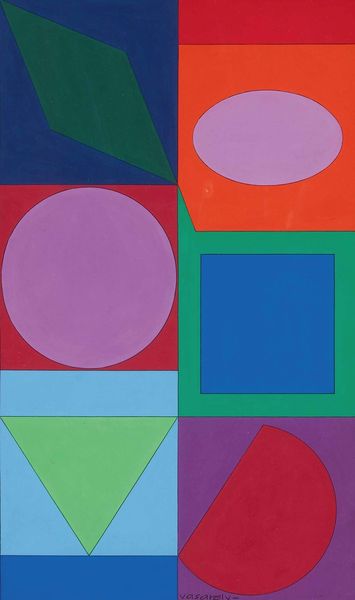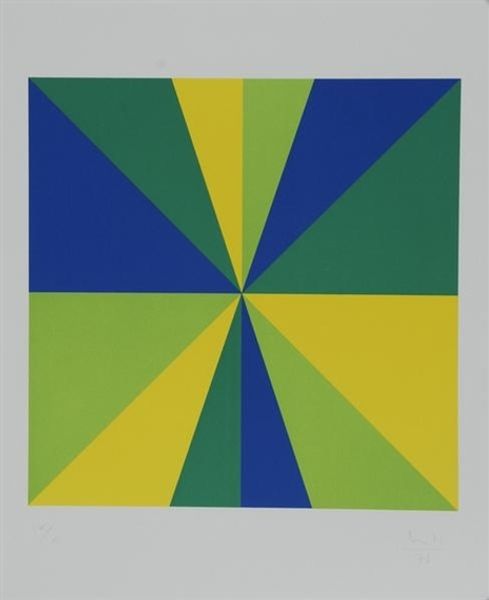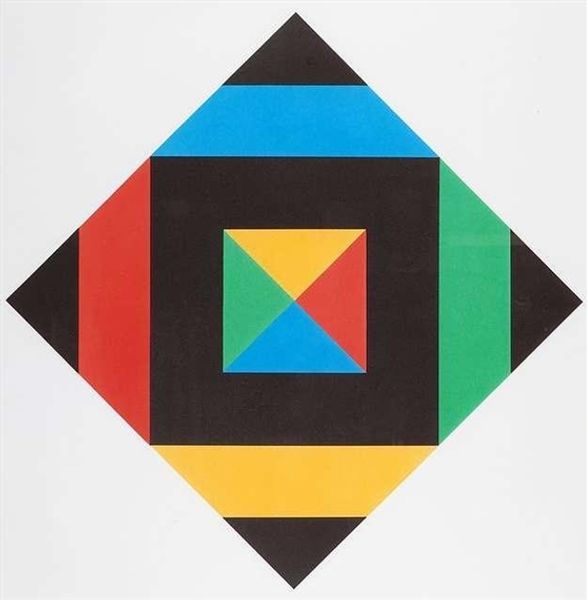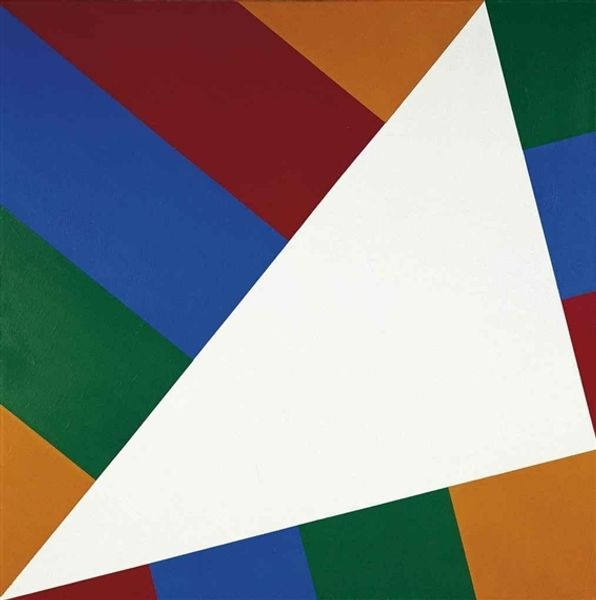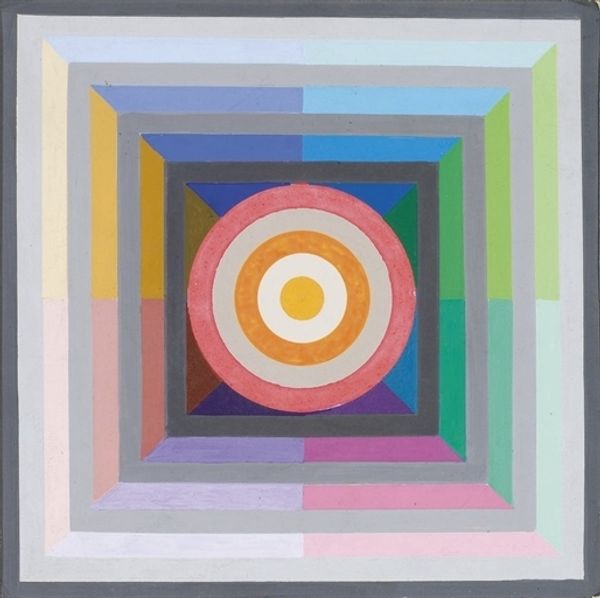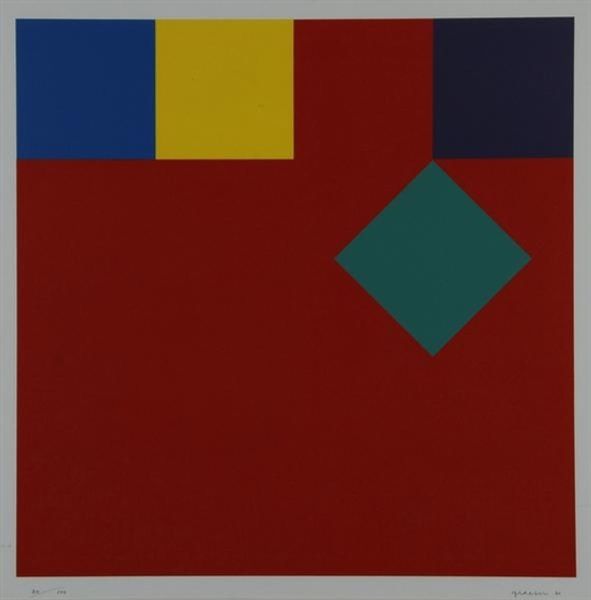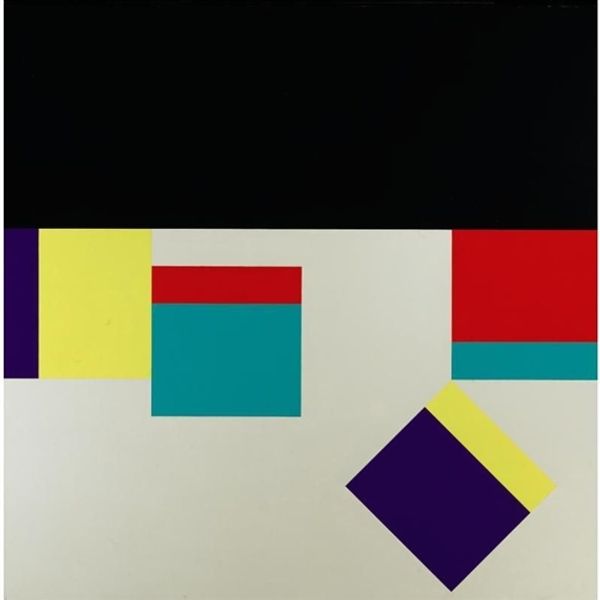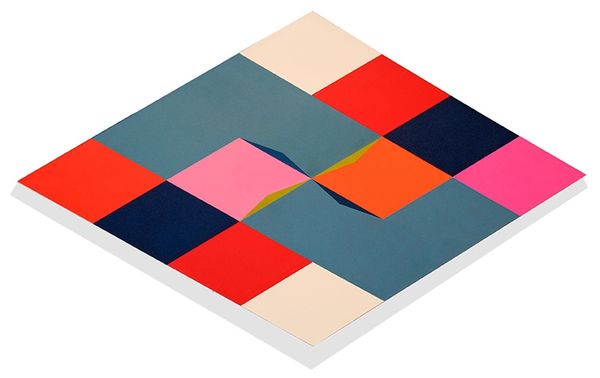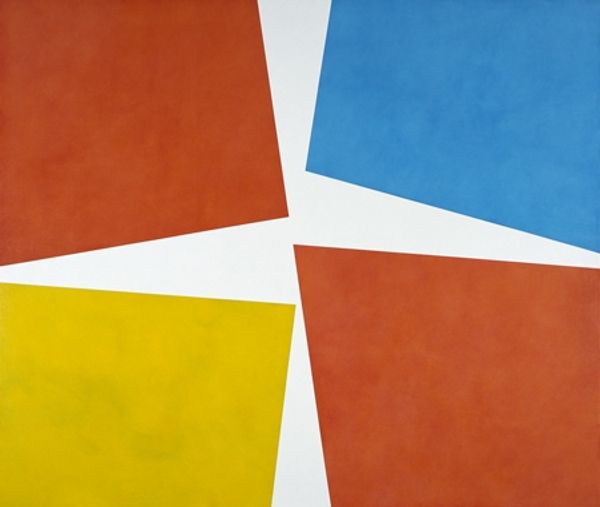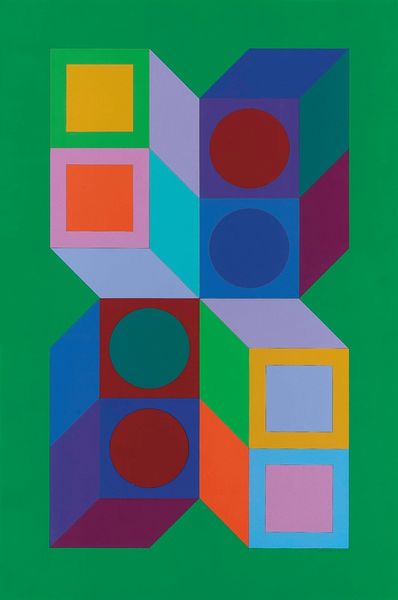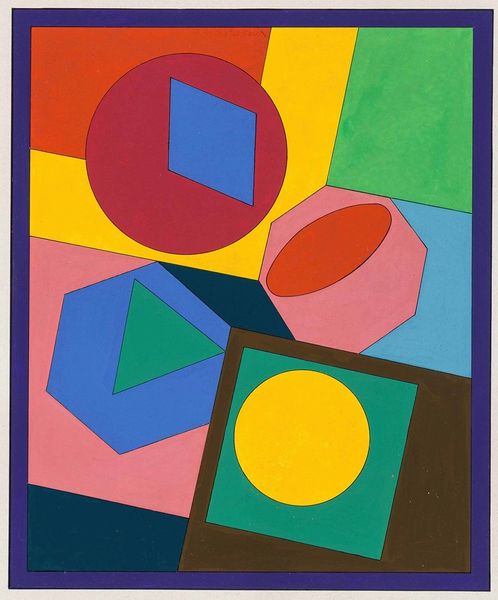
#
concrete-art
#
minimalism
#
pattern
#
geometric composition
#
colour-field-painting
#
form
#
geometric pattern
#
geometric
#
geometric-abstraction
#
abstraction
#
line
#
hard-edge-painting
Dimensions: 186.7 x 186.7 cm
Copyright: Max Bill,Fair Use
Curator: Welcome. Today, we’ll explore “Expansion in Four Directions,” a 1962 piece by Max Bill. It currently resides here at the Museum of Modern Art. Editor: My initial reaction is... controlled optimism. The geometry feels very precise, but the playful use of colour keeps it from feeling too sterile. Curator: Bill was a champion of Concrete Art, an abstract movement emphasizing pure geometric form, often rooted in mathematical principles. He believed art should be entirely free of subjective or symbolic content. Editor: Right, it’s supposed to be about the inherent qualities of colour and form, but the socio-political context is inescapable. Considering it’s the early sixties, this striving for an ordered world… is it a reaction to the chaos of the era? Curator: Possibly. Many viewed Concrete Art as a utopian project, seeking a universal language through rational, geometric structures in the face of societal upheaval. He had studied at the Bauhaus so his education would inform that idea, certainly. Editor: That utopian impulse can be read as idealistic or naive, depending on your perspective. But I'm drawn to how Bill balances this hard-edged geometry with soft, almost pastel hues. It makes the rigid structure feel… softer, less authoritarian. Curator: The title itself suggests an outward momentum. Bill’s deliberate arrangement compels the eye to move outwards from the center square, following the directional pull created by the triangles. The four directions become this conceptual expansion. Editor: Absolutely. The asymmetry prevents it from becoming static. The carefully calibrated colour placement, for instance – the single red triangle contrasting with the larger field of green – keeps the composition dynamic, creating this visual energy. It reflects Bill's view of the necessity for development in art's forms and social reach. Curator: The work embodies his conviction that art must be objective, intellectual, and universally accessible through geometry. He strove for a visual language divorced from transient cultural associations. Editor: While that purity is debatable, his visual articulation of form undeniably engages. “Expansion in Four Directions” offers us this opportunity to reflect on abstraction, geometry, and the enduring quest for order amidst societal flux. Curator: It demonstrates how art, even in its most non-representational forms, inevitably speaks to its time and, in turn, our own. Editor: It leaves you reflecting on these broader questions—how much is imposed onto abstract art? and what did people expect from artists living through cultural changes in the Sixties?
Comments
No comments
Be the first to comment and join the conversation on the ultimate creative platform.

